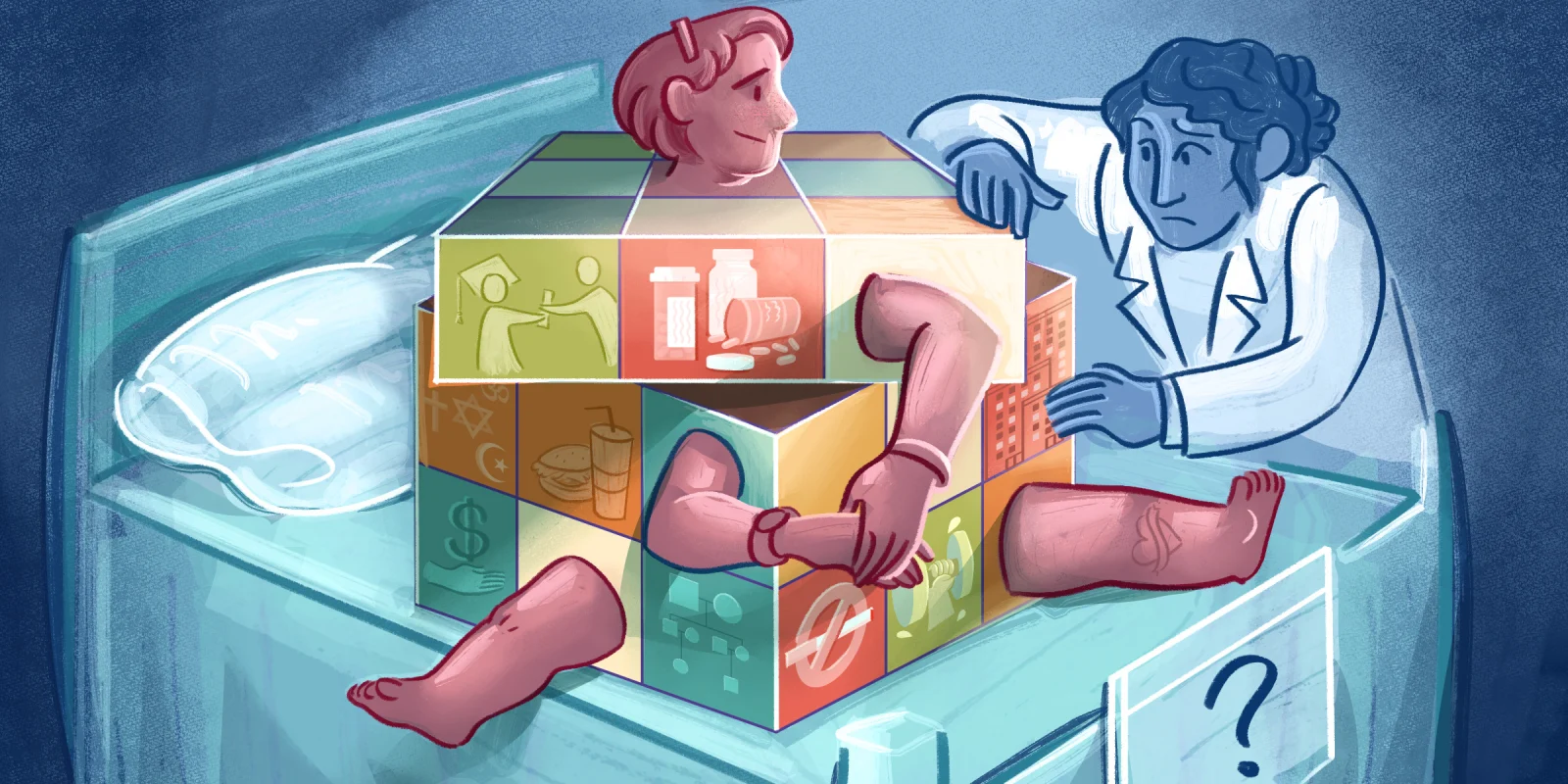Recently, my daily schedule as a pediatric NP seems particularly full with teenagers. They’re not necessarily coming in with serious complaints, but they are coming in frequently with a multitude of routine symptoms. With my packed schedule and COVID-19 fatigue, it would be tempting to “Treat ‘em and street ‘em,” as my mentor once advised years ago. But that advice seems better suited for different times — in some ways, easier times.
Today, I have a 17-year-old presenting with a chief complaint of neck pain. When I enter the exam room, she fidgets and her eyes dart toward the floor. We succinctly explore the causes of her neck pain and discuss a treatment plan. However, as I try to wrap up, I struggle to walk out of the room. I pause and look at her questioning adolescent eyes, her red cheeks peppered with acne, and I can’t help but feel that she’s waiting for something more. “What else?” I ask. “Tell me.” Tell me about learning online last year, tell me about being away from your friends, tell me about not being able to play sports, tell me how your relationships changed in your household. “Tell me,” I say. “Tell me.”
After another pause, she slowly ventures into an explanation that she’s not entirely sure of, but that brings tears to her eyes. “It’s really hard,” she says, choking on her words. I nod. She continues, not quite knowing where she’s headed. All she knows is that something very big feels out of alignment. This tearful teenager today brings to mind so many others: the 14-year-old who gained 40 pounds from binge eating; the senior who failed all his classes last year because he gave up on logging onto the computer with four other siblings and cousins in the same room; the suicidal 18-year-old whose grandmother, her biggest supporter, passed away all alone in an ICU bed. One father tells me privately in my office about his son who now experiences chest tightness every time he ventures outside, so he stays isolated in his room all day, refusing to interact with anyone beyond the comfort of a screen.
My work in a nonprofit pediatric clinic has given me a firsthand glimpse of the alarming upsurge in demand for mental health resources among teenagers, particularly after this past year of universal online learning. Anxiety, depression, and PTSD seem to have taken hold of this generation. And now, these teens are being asked to return to in-person learning and socialization without a roadmap or guidelines. Early studies suggest that mental health disorders are increasing among teenagers after quarantine. My anecdotal experience corroborates the finding that “[m]any children and youth have been deprived of structured support, trapped in dysfunctional family settings, and are relying largely on peer relations through the unsupervised use of social media.”
When I ask the sobbing teenager with neck pain what she needs, she’s unable to say. How could she? We as professionals are only just beginning to wrap our heads around the vast needs that are emerging post-pandemic. I suspect that what she really needs, beyond heating pads and NSAIDs, is advocacy and support — from medical clinics, schools, community organizations, and neighborhood leaders. Partnerships are needed to collaboratively give these adolescents hands to hold as they re-enter a social world. These partnerships include frequent check-ins from medical clinics; broad curricula in schools on emotional well-being; securing ongoing access to mental health professionals — the list goes on. What my patient needs is understanding and empathy for the fact that a lot has been asked of her, and is still being asked.
As my day draws to an end and I close my last chart, I reflect on the fact that, to one degree or another, all of our kids fell victim to the consequences of quarantine and isolation. In many respects, we are dealing with a unique period in history with little to no retrospective understanding to guide us. But we owe something quite significant to our adolescents right now. We owe them their future. We owe them their potential. We owe them a year removed from their social development. Our kids are hurting right now, and in addition to prescriptions, X-rays, and labs, we owe them a bridge between medical clinics, schools, and neighborhood organizations. We owe them access to emotional healing during this unprecedented journey.
How are you addressing the unique challenges your patients are facing in the post-pandemic world? Share your new patient care goals for this new context in the comments.
Kyra is a pediatric NP who trained in Denver, CO and now works in a neighborhood community clinic in the Bay Area. She loves having the opportunity to interact with families and their community as a whole. In her free time, Kyra enjoys spending time with her two kids doing anything that requires being outside in nature. Kyra is a 2021–2022 Doximity Op-Med Fellow.
Illustration by April Brust







